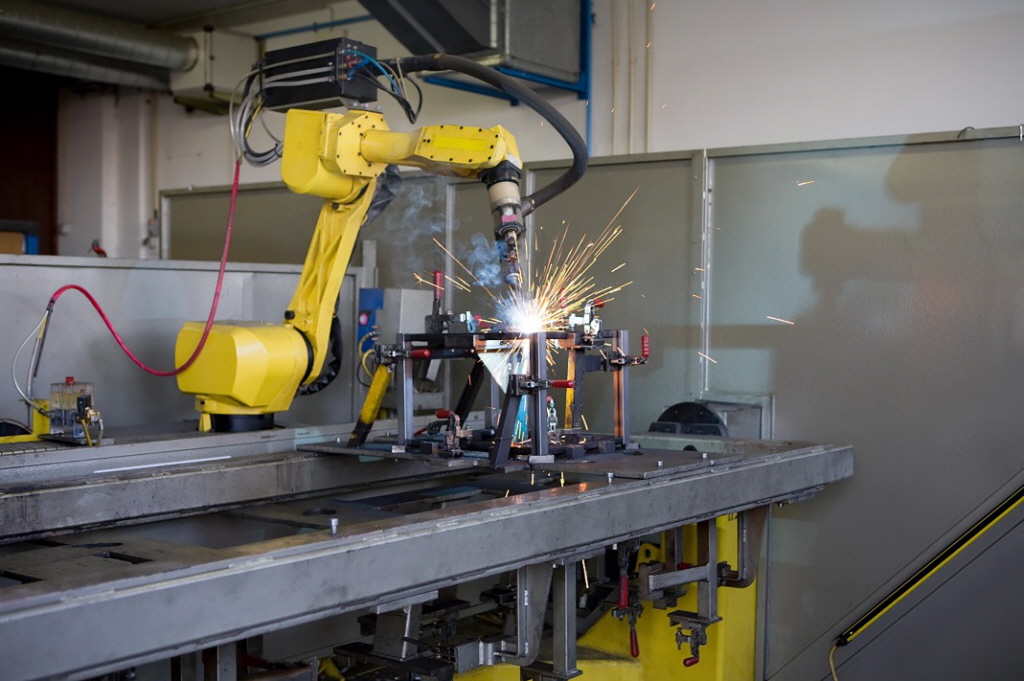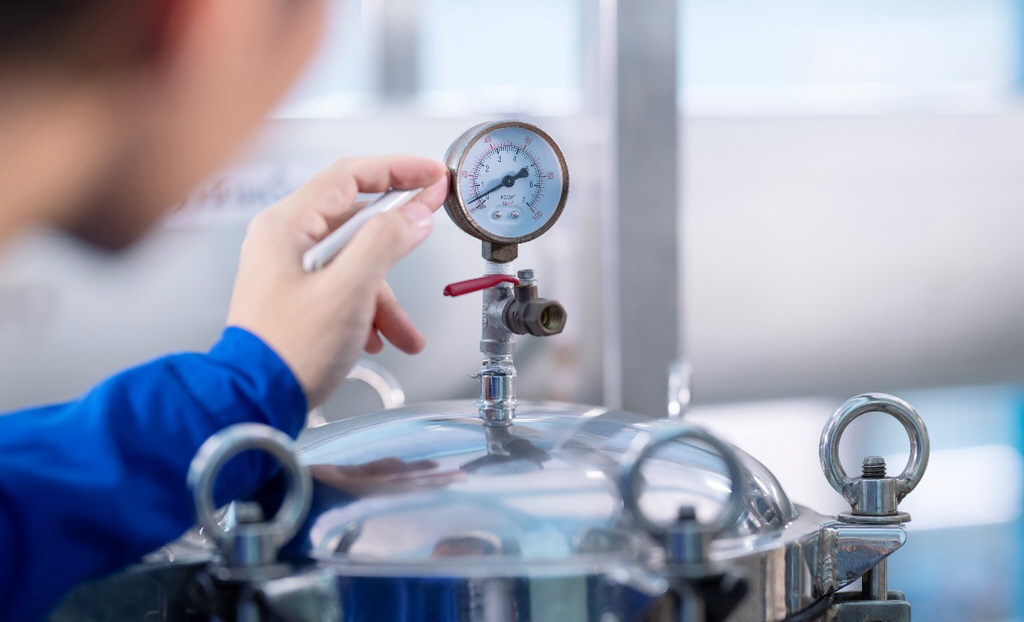“AI 이상 감지, 스마트공장 제조·비용 효율성 핵심”
현대 제조공장 기계 복잡성 증가, 기존 방법 불충분
AI, 결함 방지·정비 최적화·전체적 생산성 향상 가능
▲센서 데이터의 예기치 못한 패턴, 즉 이상은 컴포넌트의 결함이나 센서 열화와 같은 문제를 나타낼 수 있다.
산업 공정과 기계는 예측 가능성과 정확성에 의존한다. 센서 데이터의 예기치 못한 패턴, 즉 이상은 컴포넌트의 결함 또는 센서 열화와 같은 문제를 나타낼 수 있다. 엔지니어가 이러한 잠재적인 문제를 조기에 파악하는 데 도움되는 AI 기반 이상 감지는 정비 일정 최적화와 공정 효율성 개선에 용이하다. 제조 업계 경영진의 86%가 스마트 공장이 향후 5년 내에 경쟁력을 주도할 것으로 인식하고 있는 만큼, AI는 제조에서 중요한 역할을 하게 될 것으로 예상된다.

▲현대의 제조공장에서는 기계의 복잡성이 증가하면서 기존 이상 감지 방법으로는 불충분하다는 것이 입증되었다.
현대의 제조공장은 기계의 복잡성이 증가해 기존 이상 감지 방법으로는 불충분하다는 것이 입증됐다. 그동안 엔지니어와 기술자들은 센서 값이 정의된 임계값을 초과하는 경우 수작업으로 데이터를 검사하거나 자동 알림에 의존해야 했다. 엔지니어는 수천 개의 센서를 동시에 분석할 수 없으므로 많은 센서에서 복잡하고 숨겨진 패턴으로 발생하는 이상 감지를 놓칠 수밖에 없다.
이러한 과제로 인해 오늘날 제조 산업의 엔지니어들은 AI를 사용하여 이상 감지의 규모와 정확도를 개선하고 있다. AI 알고리즘은 수천 개의 센서에서 제공되는 방대한 양의 데이터로 훈련되어 사람의 눈으로는 식별할 수 없는 복잡한 이상을 정확히 찾아낼 수 있기 때문에 제조 조직은 AI의 규모와 엔지니어의 분야별 지식을 결합하여 종합적인 이상 감지 솔루션을 구축할 수 있다.
■ AI 기반 이상 감지 솔루션 설계
AI 기반 이상 감지 솔루션의 설계는 계획 및 데이터 수집부터 배포와 통합에 이르는 포괄적인 공정이다. 엔지니어는 잠재적인 문제를 효과적으로 식별할 수 있는 솔루션을 개발하기 위해 알고리즘 개발과 운영 환경 두 가지 모두를 심층적으로 이해해야 한다.
■ 계획 및 데이터 수집
문제 정의는 AI 기반 이상 감지 시스템을 위한 설계 공정의 시작이다. 여기에는 사용 가능한 센서 데이터, 컴포넌트 또는 공정, 발생 가능한 이상의 유형에 대한 평가가 포함된다. AI를 처음 접하는 조직의 경우 제한적인 범위의 개념 증명 프로젝트부터 시작하는 것이 중요하다. 개념 증명 프로젝트에서 성공적인 결과를 얻으면 더 큰 이니셔티브로 넘어가기 전에 조직에 명확한 가치를 제공할 수 있다.
고품질의 데이터는 AI 시스템에 매우 중요하다. 엔지니어는 먼저 이상을 구성하는 요소와 데이터가 이상 데이터로 분류되는 조건을 정의해야 한다. 데이터 수집에는 센서를 사용한 장비 및 공정의 지속적인 모니터링과 데이터의 정확성을 보장하기 위한 수작업 확인이 포함된다.
■ 데이터 탐색 및 전처리
산업 이상 감지를 위한 대부분의 데이터는 온도, 압력, 진동, 전압 및 장시간에 걸쳐 수집되는 기타 측정값과 같은 시계열 데이터를 수집하는 센서에서 얻는다. 또한 환경 데이터, 정비 기록, 운영 파라미터와 같은 관련 항목도 포함될 수 있다. 이상 감지 알고리즘을 설계하기 위한 첫 단계에는 분석에 적합하도록 데이터를 정리하고 전처리하는 작업이 포함된다. 여기에는 데이터 형식 변경과 재구성, 문제와 관련된 요소 추출, 누락값 처리, 이상값 제거 등이 포함된다.
다음 단계는 이상 감지 기법을 선택하는 것이다. 이를 위해서는 데이터의 특성과 이상의 속성, 사용 가능한 계산 리소스에 대한 평가가 필요하다.
■ 모델 선택 및 훈련
특정 데이터셋에 가장 잘 맞는 모델을 찾으려면 AI 모델에 대한 다양한 훈련 접근법으로 실험해 보는 것이 매우 중요하다. 크게 보면 AI 기법은 사용 가능한 데이터의 유형에 따라 지도 학습과 비지도 학습 접근법으로 나눌 수 있다.
○ 지도 학습
과거 데이터 청크에 정상 또는 이상으로 명확하게 레이블을 지정할 수 있는 경우 지도 학습이 이상 감지에 사용된다. 레이블 지정은 엔지니어가 수작업을 통해 정비 기록 또는 과거의 관찰 내용에 따라 레이블을 지정하는 방식으로 수행되는 경우가 많다. 지도 학습 모델은 레이블이 지정된 데이터셋을 사용한 훈련을 통해 데이터와 해당 레이블에서 나타나는 패턴 사이의 관계를 학습한다. 매트랩(MATLAB)에 있는 분류 학습기와 같은 툴은 엔지니어가 여러 머신러닝 방법을 동시에 실험하면서 가장 우수한 모델을 파악하는 데 유용하다. 포장 및 종이 제품을 제조하는 세계적인 선도 기업 '몬디 그로나우(Mondi Gronau)'는 실제로 지도학습을 통해 플라스틱 제조 기계에서의 잠재적인 고장을 예측했다. 훈련된 모델은 센서 데이터의 새로운 청크가 정상 또는 이상인지 여부를 예측할 수 있다.
○ 비지도 학습
많은 조직은 지도 학습 접근법에 필요한 '레이블이 지정된 이상 데이터'를 보유하고 있지 않다. 그 이유로는 이상 데이터가 보관되지 않았거나, 대규모 훈련 데이터셋을 만들만큼 충분한 이상이 발생하지 않기 때문일 수도 있다. 훈련 데이터가 정상인 대부분의 경우 비지도 학습이 필요하다.
비지도 학습 접근법에서 모델은 정상 데이터의 특성을 이해하도록 훈련되며, 정상 범위를 벗어나는 모든 새로운 데이터는 이상 데이터로 표시된다. 비지도 모델은 센서 데이터를 분석해서, 과거에 해당 유형의 장애가 발생하거나 레이블이 지정된 적이 없더라도 문제의 징후일 수 있는 비정상적인 패턴을 식별할 수 있다.
○ 특징 엔지니어링
일부 AI 모델은 원시 센서 데이터로 훈련되지만, 훈련 전에 특징 엔지니어링이라는 공정을 통해 데이터에서 유용한 특징을 추출하는 것이 더 효과적인 경우가 많다. 특징 엔지니어링은 원시 데이터에서 유용한 값을 추출하는 공정으로, AI 모델이 기반 패턴으로부터 더 효율적으로 학습하는 데 도움된다. 숙련된 엔지니어는 센서 데이터에서 추출할 중요한 특징의 유형을 이미 아는 경우가 많다. 예측 유지관리 툴박스(Predictive Maintenance Toolbox)는 지도 AI 모델 또는 비지도 AI 모델의 성능 강화를 위해 데이터셋에서 관련성이 가장 높은 특징을 추출하고 순위를 지정하기 위한 대화형 방식 툴을 제공한다.
영상 또는 텍스트와 같은 일부 데이터 유형의 경우 명시적인 특징 추출 없이 자동으로 패턴을 추출할 수 있는 딥러닝 접근법의 장점을 활용할 수 있다. 지중 케이블 수명 주기 상태 평가 및 성능 분야의 선도 기업 'IMCORP'는 시계열과 영상 기반 이상 감지를 결합하고, 딥러닝을 통해 지하 전송선로의 장애를 파악했다. 이러한 딥러닝 접근법은 강력한 기능을 발휘하지만 대규모 훈련 데이터셋과 계산 리소스가 필요하다.
■ 검증 및 테스트
AI 모델의 검증 및 테스트는 신뢰성과 견고성을 보장한다. 일반적으로 엔지니어는 데이터를 학습, 검증, 테스트 세트의 세 부분으로 나눈다. 훈련 및 검증 데이터는 훈련 단계에서 모델 파라미터를 조정하는 데 사용되며, 테스트 데이터는 모델이 훈련된 후 처음 보는 데이터에 대한 모델의 성능을 판단하는 데 사용된다. 또한 엔지니어는 정밀도, 재현율과 같은 성능 메트릭을 사용하여 모델 평가와 미세 조정을 통해 특정 이상 감지 문제의 요구사항을 충족할 수도 있다.
■ 배포 및 통합
훈련과 테스트를 거친 AI 모델은 운영 환경에 배포되어 새로운 데이터에 대한 예측을 수행하기 시작하면서 유용성을 갖추게 된다. 엔지니어는 적절한 배포 환경을 선택할 때 계산 요구사항, 지연, 확장성과 같은 인자를 고려한다. 배포 환경은 제조 공정과 근접한 곳에 위치한 엣지 기기부터 온프레미스 서버, 그리고 거의 무제한의 연산 능력을 갖추었지만 지연 시간이 긴 클라우드 플랫폼까지 다양하다. 매트랩 컴파일러(MATLAB Compiler) 및 매트랩 코더(MATLAB Coder)와 같은 배포 툴은 엔지니어가 다른 소프트웨어 시스템에 통합할 수 있는 독립 실행형 애플리케이션과 코드를 생성할 수 있게 한다. 산업 부문을 위한 소프트웨어 및 자동화 서비스를 제공하는 에어젠 디지털 시스템즈(Aerzen Digital Systems)는 폐수 처리 플랜트와 같은 중요한 산업 설비에서 문제를 감지하기 위해 통합 클라우드 기반의 이상 감지 솔루션을 배포했다.
통합을 위해서는 모델 예측에 액세스 하기 위한 API를 개발하고, 모델이 적절한 형식의 전처리된 입력을 받을 수 있도록 데이터 파이프라인을 설정해야 한다. 이를 통해 모델은 애플리케이션 또는 시스템의 다른 컴포넌트와 함께 작동하여 완전한 가치를 제공할 수 있다.
■ 결론
AI 기반 이상 감지는 제조 효율성과 비용 효율성을 향한 여정에서 중대한 발전이다. 엔지니어의 전문성 및 최신 기술 발전과 결합된 AI를 통해 제조업체는 결함 발생 방지, 정비 일정 최적화, 전체적인 생산성 향상이 가능하다. AI를 제조 공정에 통합하는 것은 복잡한 작업일 수 있지만, 효율성, 비용 절감, 경쟁 우위의 측면에서 잠재적으로 막대한 효과가 발생할 수 있다. 제조 산업이 발전함에 따라 혁신과 운영 탁월성을 이끄는 AI의 역할은 계속해서 커질 것이다.
※ 기고자

김영우 매스웍스코리아 전무
김영우 전무는 삼성전자에서 19년 정도 근무하고 인텔 코리아 R&D Center를 거쳤다. 무선통신 분야에서 프로젝트를 주로 수행했다. 이후 매스웍스 코리아에서 현재까지 17년을 함께하고 있다.


